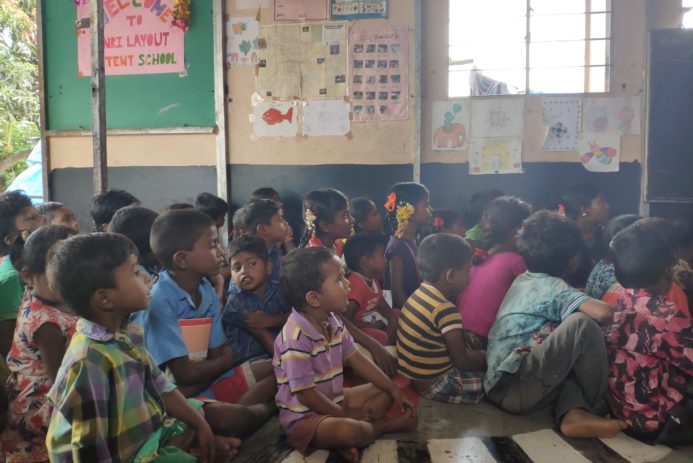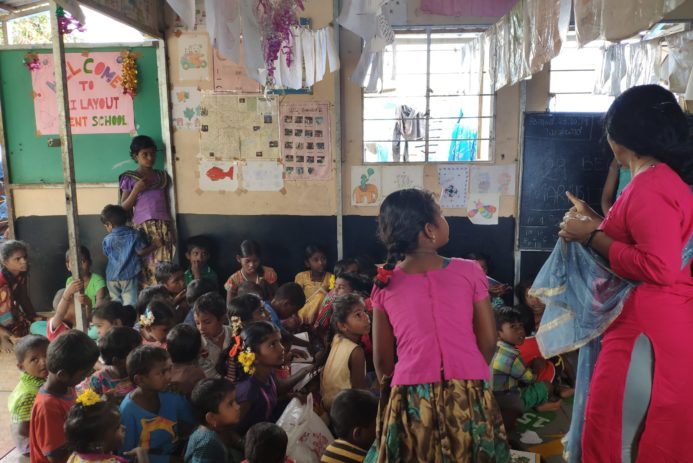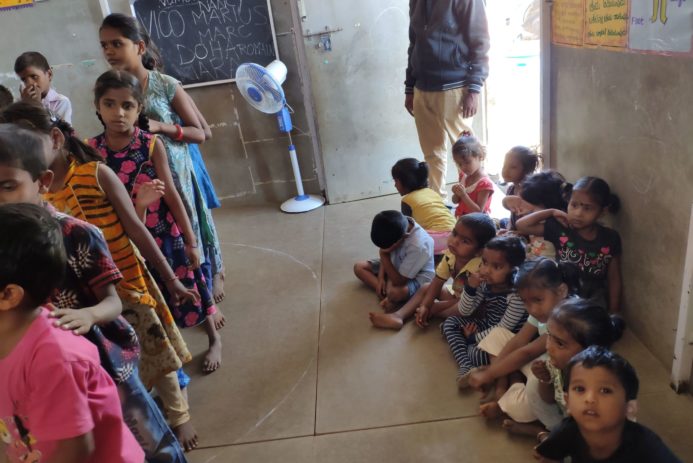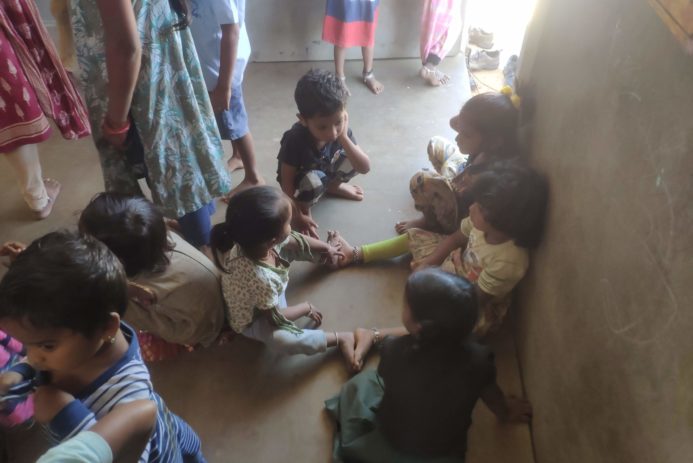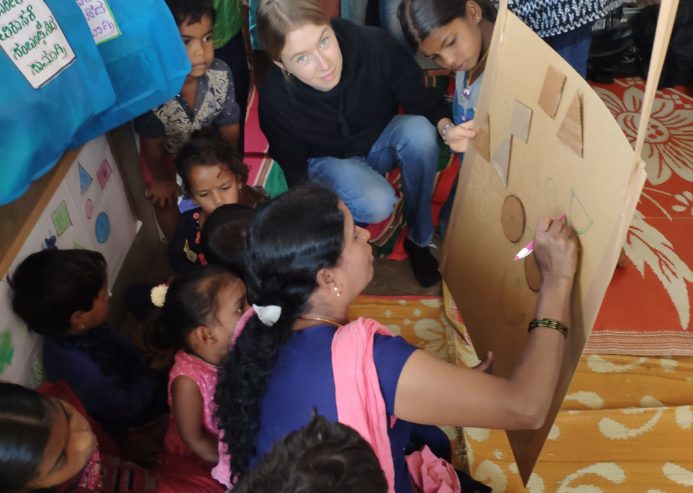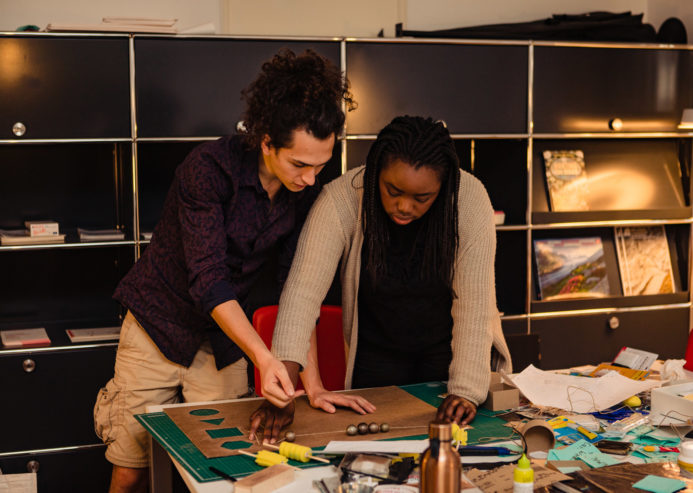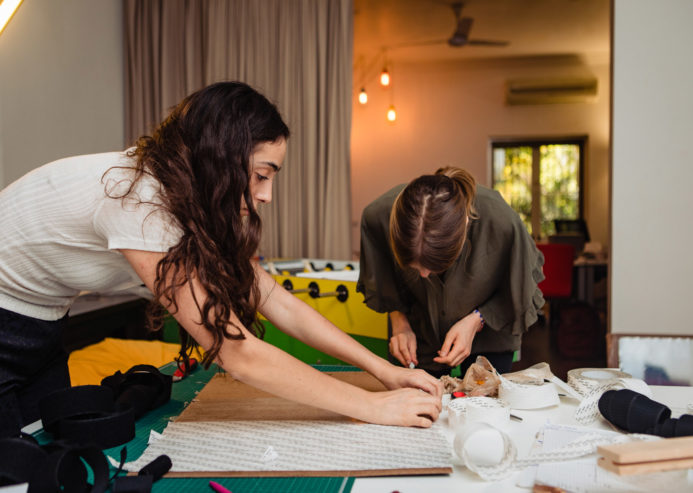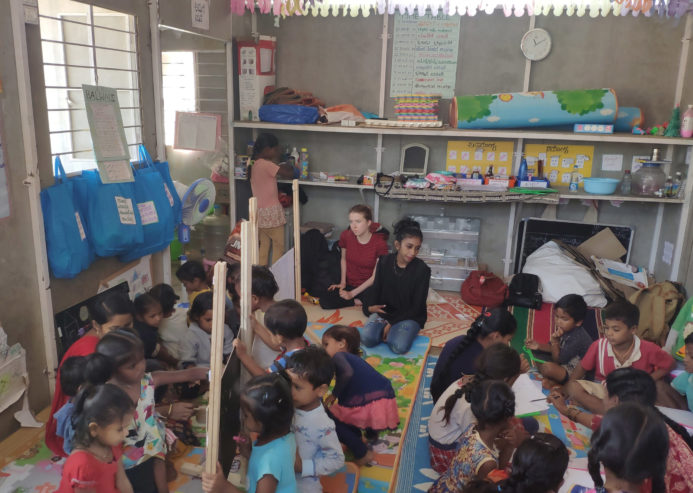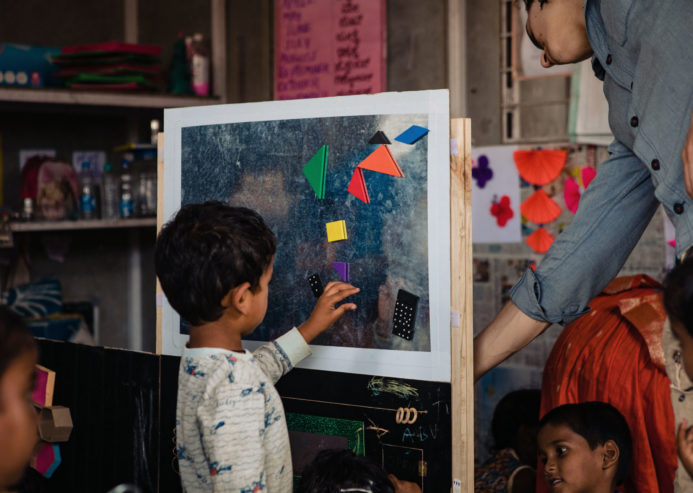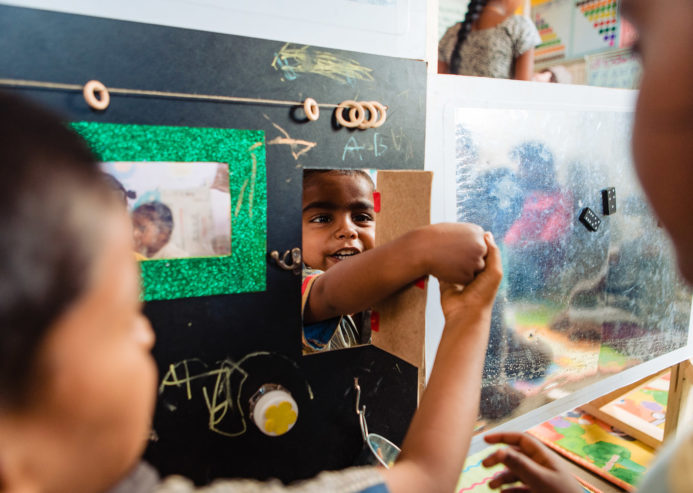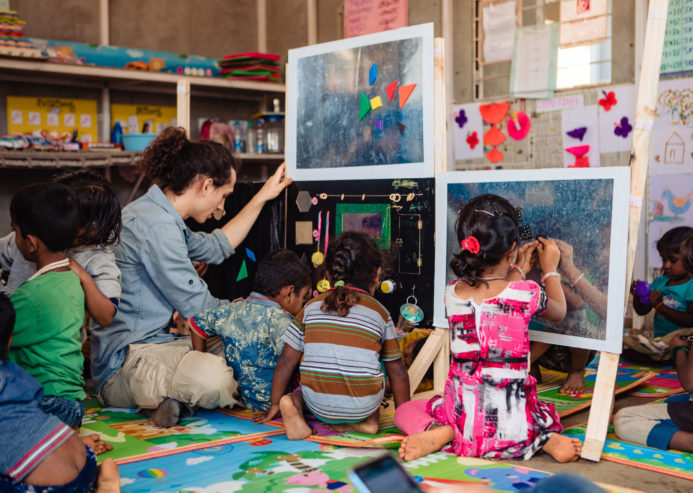Classroom dividers
Optimizing space for different age groups
”
Victorine
LefebvreProduct Design
”
Dana GhosnEPFL
”
Jean-André
Davy--GuidicelliEPFL
”
Grace LokakoHEC, Lausanne
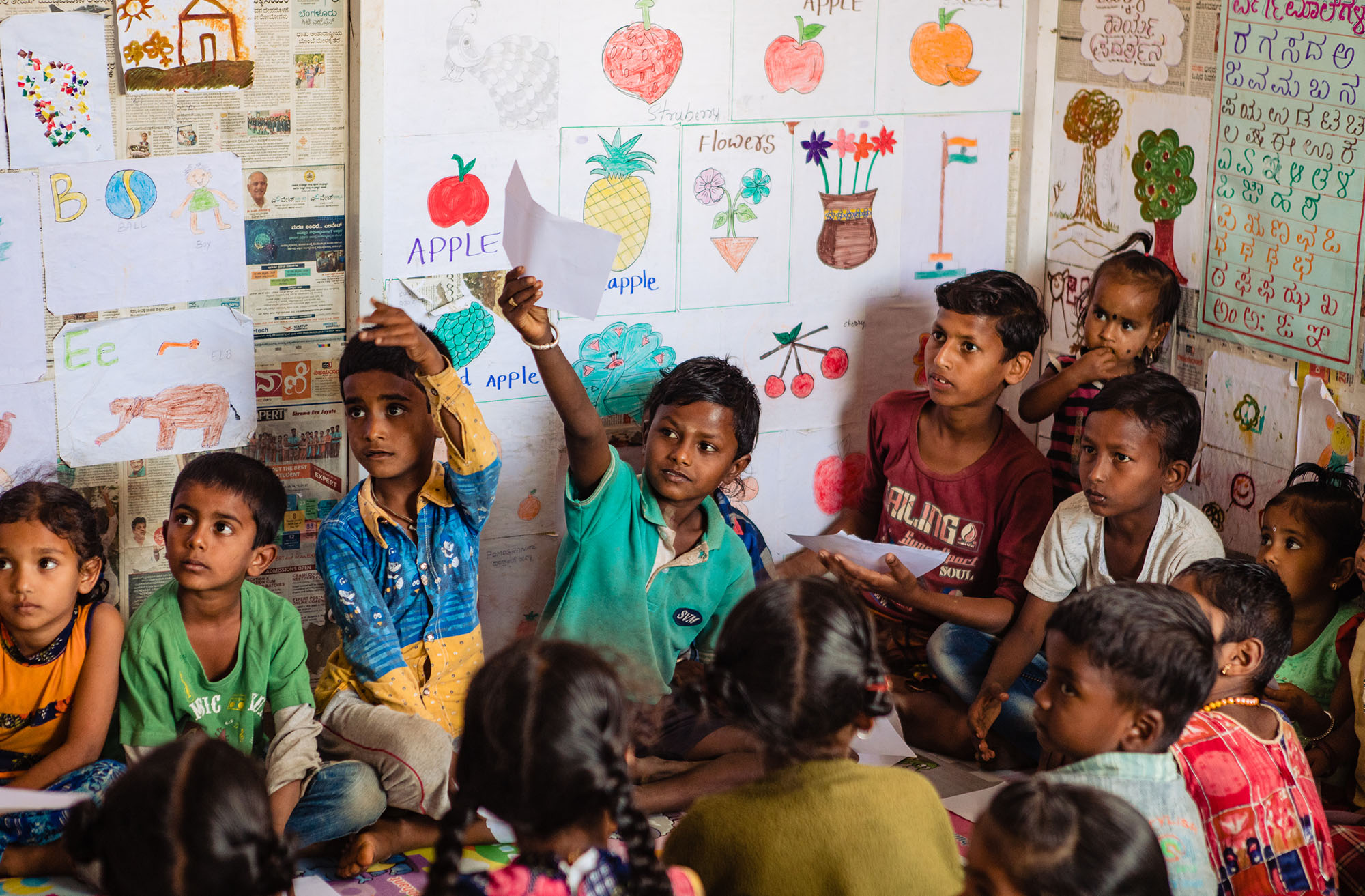
How might we improve students' concentration in the classroom?
The Bridge schools are established for migrant workers children in the urban slums. With a highly variable number of students (up to 60) of all ages (from 18 months to 12 years old) in a one-room structure, space, time, and resources are often in short supply. Creating the proper learning conditions is a daily challenge for the teacher.
Dana, Victorine, Grace, and Jean-André have been asked to observe disturbance in the classroom and to propose a solution to reduce it. They have spent time observing the daily school's activities, and discussing with the different stakeholders (students, teachers, parents, social workers) in order to better understand the multiple dimensions of the challenge.
Understanding the classroom's dynamics
Thanks to the initial field research, the team has made some observations that challenged some of their initial assumptions about the disturbance generation factors and triggers. The high number of students, the restricted space, the diversity of age, and the responsibility for the older sibling to take care of the youngest are significative factors. However, the pedagogical activity's nature, its duration and skills requirements are important triggers. Therefore, it's not possible to blame a single characterized students' group for disturbing the activities.
2. Solution Definition
Engaging students in an autonomous activity
The team has decided to test multiple ideas to engage students in autonomous learning or creative activities while questioning space use. With low-fidelity prototypes, they returned to the schools for testing and gather feedback. From this iteration, they have imagined a modular activity board system that allows teachers to reimagine the schools’ open space as they need, reducing overall disturbance from students not involved in the main class.
3. Prototype Validation
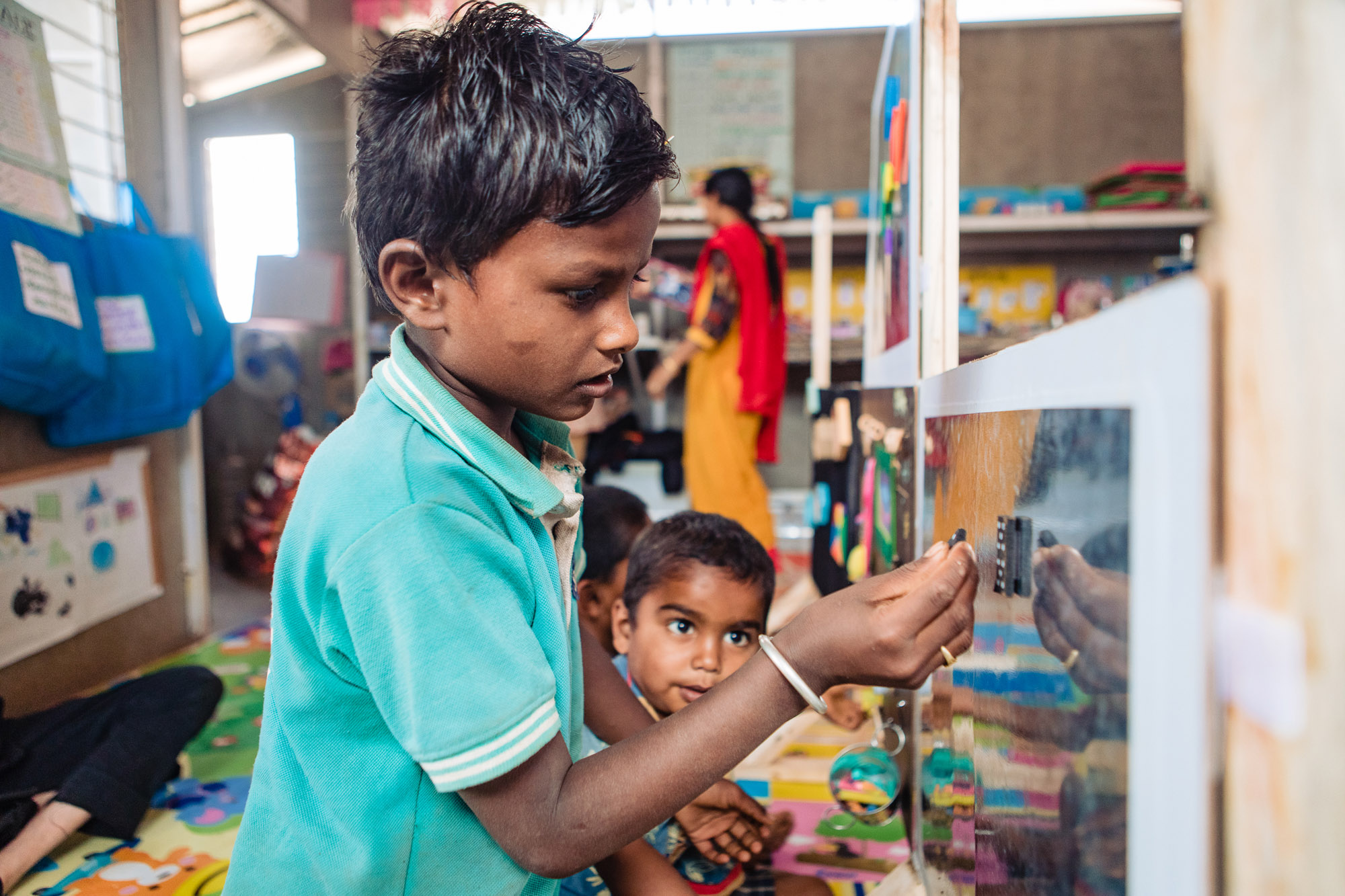
Testing in real conditions
Finally, the team has prototyped two sets of modular activity board, ready to be tested in real conditions, in two different bridge schools but with a similar protocol: launching a writing activity that some of the students would quickly leave to do something else. It appeared that the proposed solution was clearly supporting the teachers' effort to reduce disturbance and foster other students' concentration on the main activity. However, the team has also observed that the solution would require some extra technical iterations in order to support an adoption test and longer-term project impact tracking.


